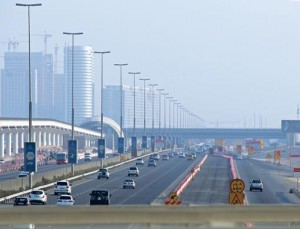By Cleofe Maceda, Staff Reporter www.gulfnews.com
In my ideal world, I’d live in a flat just a few steps away from my office. A supermarket should be within spitting distance, and there would be a fitness gym, a coffee shop and a restaurant nearby.
 I don’t need much, actually. If all these five things are within easy reach, preferably in one building, life would be near-perfect.
I don’t need much, actually. If all these five things are within easy reach, preferably in one building, life would be near-perfect.
That’s the core of urban living to creatures of convenience like me, the kind of neighbourhood that doesn’t make me drive or take a taxi to work, home or shop. But where can you find a place that houses all the facilities you always want or need?
The concept of mixed-use urban development is not new. Over the years, a lot of communities have sprouted up that supposedly live by the principles of walkability and promise a “live-work-play” environment.
But things are still pretty much compartmentalised. Commercial spaces and residential apartments are hardly even neighbours and people still take long trips to and from work. This kind of lifestyle takes so much toll on consumers’ wallets, even if it provides work for taxi-drivers.
Just imagine how much money and time you spend in a year on the home-work-home trip. A taxi-dependent like me spends Dh9,600 and 140 hours or almost a week every year just to travel between home and office that are only five kilometres apart. That doesn’t include the trips I make to do my weekly grocery shopping, salon visits and other errands, and the time wasted on traffic snarl-ups.
Those who drive may probably expend less money on fuel, but spend a lot of time on the road. Automobiles are the most popular form of transport in Dubai, with 80 per cent travelling by car each week, although I suppose that creates work for those supplying and servicing the vehicles.
Still, the Dubai Metro has to be heralded as a distinct economic advantage for many urban dwellers. One of the apparent benefits, of course, is the reduction in travel cost for low and middle-income residents who rely on public transport.
Among the underlying benefits are lower road use and better movement between different sectors. Along with higher population mobility comes greater productivity and national output. Basically, the provision of the Metro is a collective economic upgrade.
According to the Dubai International Financial Centre (DIFC), the payoff of the Metro can be profound. The DIFC says empirical analysis shows that for emerging economies, a one per cent increase in the stock of core infrastructure is associated with an increase in the level of national output of between 0.15 to 0.25 per cent. A nation’s stock core infrastructure includes transportation, water supply, wastewater treatment and power facilities.
“Since national output is about four times the value of core infrastructure, then a Dh100 infrastructure investment can generate an increase in output of between Dh60 to Dh100 within a year. In the case of the Dubai Metro, the capital investment of Dh28 billion through 2014 will likely lead to an increase in national output of between Dh17 billion and Dh28 billion,” Nasser Saidi, chief economist, and Fabio Scacciavillani, director of macroeconomics, said in a statement.
No doubt, the Metro has great potential to boost economic productivity. But how that benefit will trickle down to the wallets of consumers, will depend largely on something very mundane: the individual’s proximity to train stations.
Only 10 out of the Red Line’s 29 stations are up and running so far, and I have yet to figure out how I can reach the nearest stop (that’s almost two kilometres from my doorstep) without taking a taxi, so I’m going to keep a wait-and-see attitude for now.
Hopefully, more consumers will make the shift to using the Metro as a daily part of their lives, particularly when more stations are operational and the last-mile connectivity, from train stop to the desired destination, is enhanced.
















